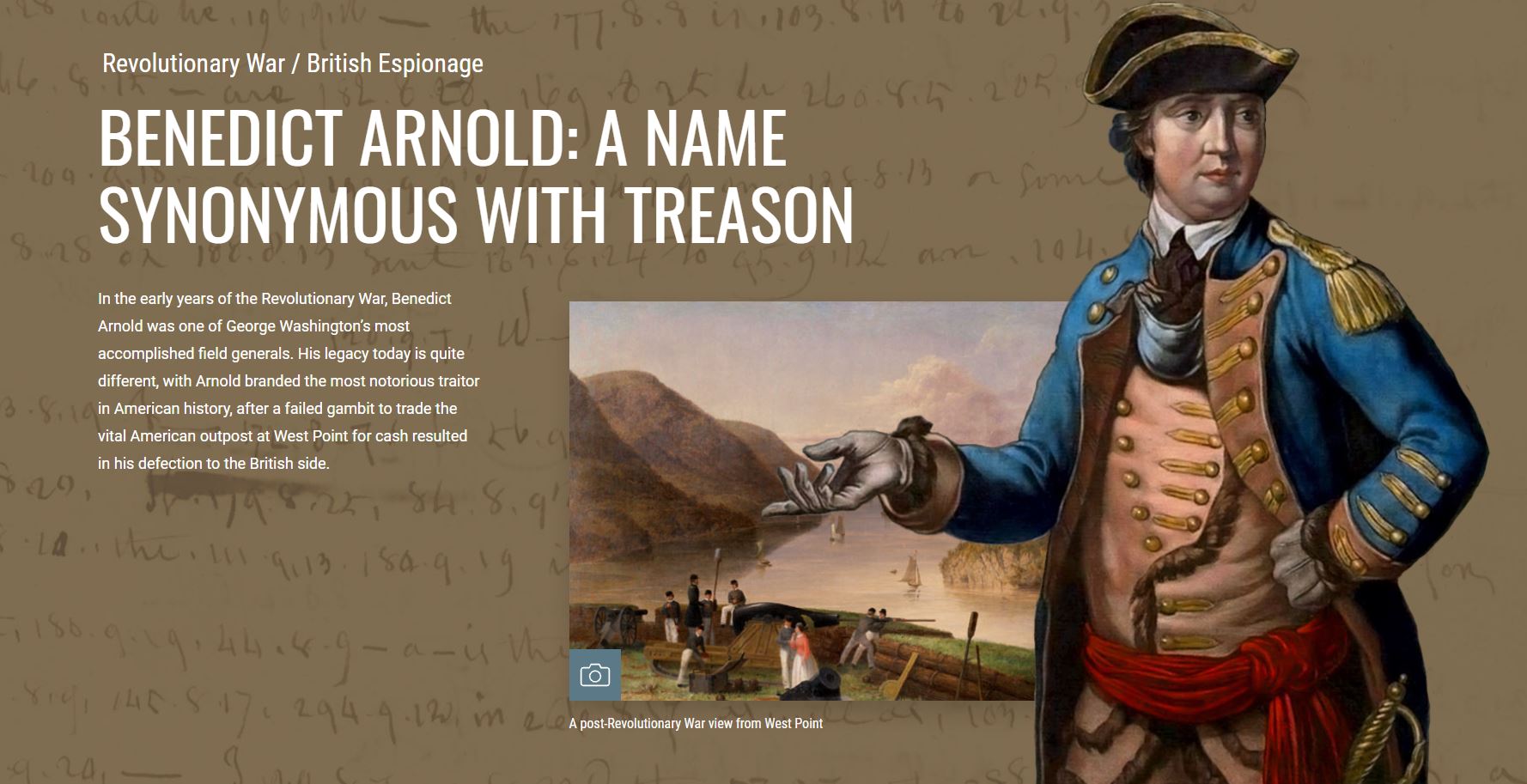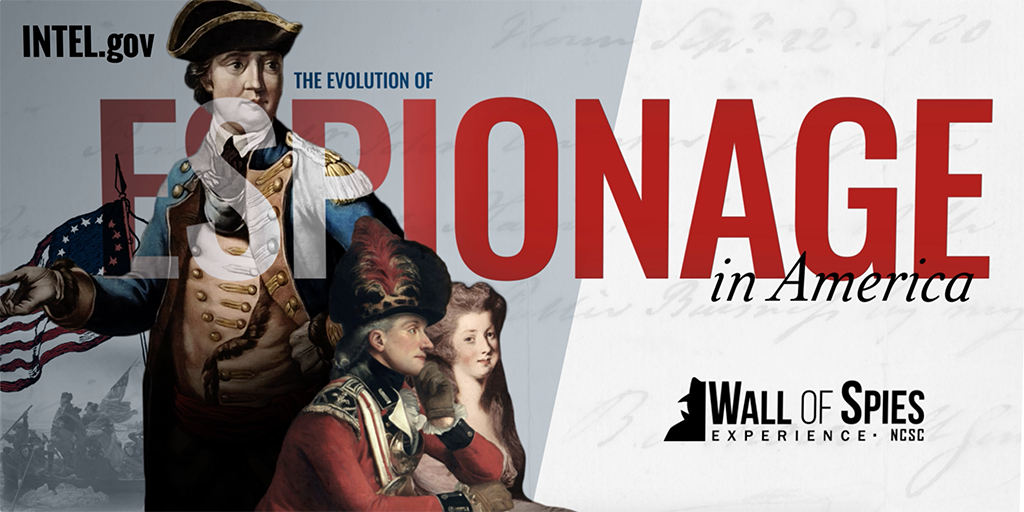Story by Annika Moody, ODNI Office of Strategic Communications
Stories of sabotage and espionage have lit up the imaginations of people across the world for centuries.
But what is reality?
The Intelligence Community shares information publically while walking a fine line between open transparency and protecting secrets. Secrets that help protect national security and transparency that lets the American public understand why those secrets protect the nation.
The Office of the Director of National Intelligence’s National Counterintelligence and Security Center, the Civil Liberties, Privacy and Transparency Office, and the National Counterterrorism Center partnered to build the digital “Evolution of Espionage” exhibit on INTEL.gov.
The site, based on a physical exhibit called the “Wall of Spies” located at ODNI’s Intelligence Community Campus-Bethesda, tells America’s story of espionage and offers transparency without risking security.

NCSC Executive Director Patricia Larsen started working on a physical “Wall of Spies” project that began with just a few individuals and has turned into the museum quality “Evolution of Espionage” experience it is today.
“It really has been a labor of love. This is one of the things I’m most proud of in my entire intelligence career because this is helping to capture our history for future generations,” Larsen said.
Michael David Thomas, ODNI's Deputy Transparency Officer, was a key contributor to “The Evolution of Espionage” digital project.
“We have a complicated mission, and it is sometimes hard to talk about our mission in the present tense because we need to protect our sources, methods and people in order to keep doing the mission,” said Thomas. “The Wall of Spies gave us a specific opportunity to take a resource that was designed to help intelligence officers internally understand counterintelligence, both the importance of the security aspect of that mission, the risk they might face to themselves and the harm that we’ve seen in our history through subterfuge, spying, sabotage, all of these things. I knew we had an equally great opportunity to adapt that externally and have a similar experience for the public.”

The decision to build a website, a wall without limits, could allow for the team to cover the past and keep expanding as the future unfolds.
“The website really was important to us because we realized there was going to be no ability for people to actually see this wall if they were part of the American public,” said Larsen. “We partnered with NCTC’s (National Counterterrorism Center) graphics (department). They’ve been very good at saying this is how you can make this a compelling story digitally. We had a lot more content that we found through research and writing that we just couldn’t fit, so this digital wall gives us a chance to tell a lot more stories.”
Research and inspiration from different museums’ digital experiences, historical and modern day contemporary artists, and designers went into developing the site. The site is divided into eras. The first era, published in October 2021, is about the Revolutionary War, and each subsequent era will be released as it is completed, up to the modern day.
“The concept that we ultimately pursued was to try to, especially in this early era where we are all familiar with like paintings of the founding fathers… was to make them (historical figures) more accessible, to humanize them and to really break them out of the frames of those oil paintings,” said Thomas. “So when you are talking about (George) Washington you aren’t seeing him inside the confines of some rarified painting, you’re really seeing Washington the person.”

Lester Beall was an early champion of modernist graphic design and was a rich source of inspiration for the design team. During the 1930’s Beall worked for the U.S. government’s Rural Electrifications Commission and for Housing and Urban Development, creating a number of designs that are still iconic to this day.
“We looked to a variety of contemporary inspiration from artists working in this collage or photomontage approach,” said Thomas. “We looked at (Lester Beall’s) designs and were like, ‘okay what do we want to bring forward?’ We want to use these cutouts of people and things and use them as architecture in the image and not just the spotlight. We want to have strong graphic elements and colors and use them to highlight narrative. And so I think, or I hope that you see that in the final product.”
Thomas added that as additional eras are completed and published, the design elements will change to reflect the time period.
“Era by era the textures and the relevance of certain things are going to change. There are these parchment elements that speak to this revolutionary period but as we move into the Civil War we are going to look for what is evocative for that time and place.“
The design team created a visually appealing site that is also interactive and easily digestible.
“I think it’s fair to say that if you told people you were going to sit down and give them a lecture on counterintelligence as it stands today you would have a relatively small audience compared to a collection of really intriguing spy stories that in turn give you a foundation to have that conversation,” said Thomas.
The website offers another level of transparency with an American public that in years past didn’t exist, and allows everyone to experience a history that otherwise might have been lost.
“Our espionage and our sabotage history isn’t just IC history, it’s our shared national history,” said Larsen. “The more people who understand that history will also understand what lessons to learn from it and how to not make these same mistakes again.”

Intel.gov was created in 2017 as a way to meet the Principles of Intelligence Transparency for the IC, which were issued in 2015. The principles require the IC to be proactive in enhancing the public’s understanding of the IC.
“As always with Intelligence.gov, and our broader transparency projects, our goal is to knock people’s socks off,” said Thomas. “If we can cause that moment of surprise –‘wait, the government did something this cool?’ We can wedge the door open to really impact their overall understanding and impressions of the IC.”
The “Evolution of Espionage” site on INTEL.gov is a triumph for transparency, creating a window for the public into a world previously unknown.
Check out the site here: https://www.intel.gov/evolution-of-espionage.





